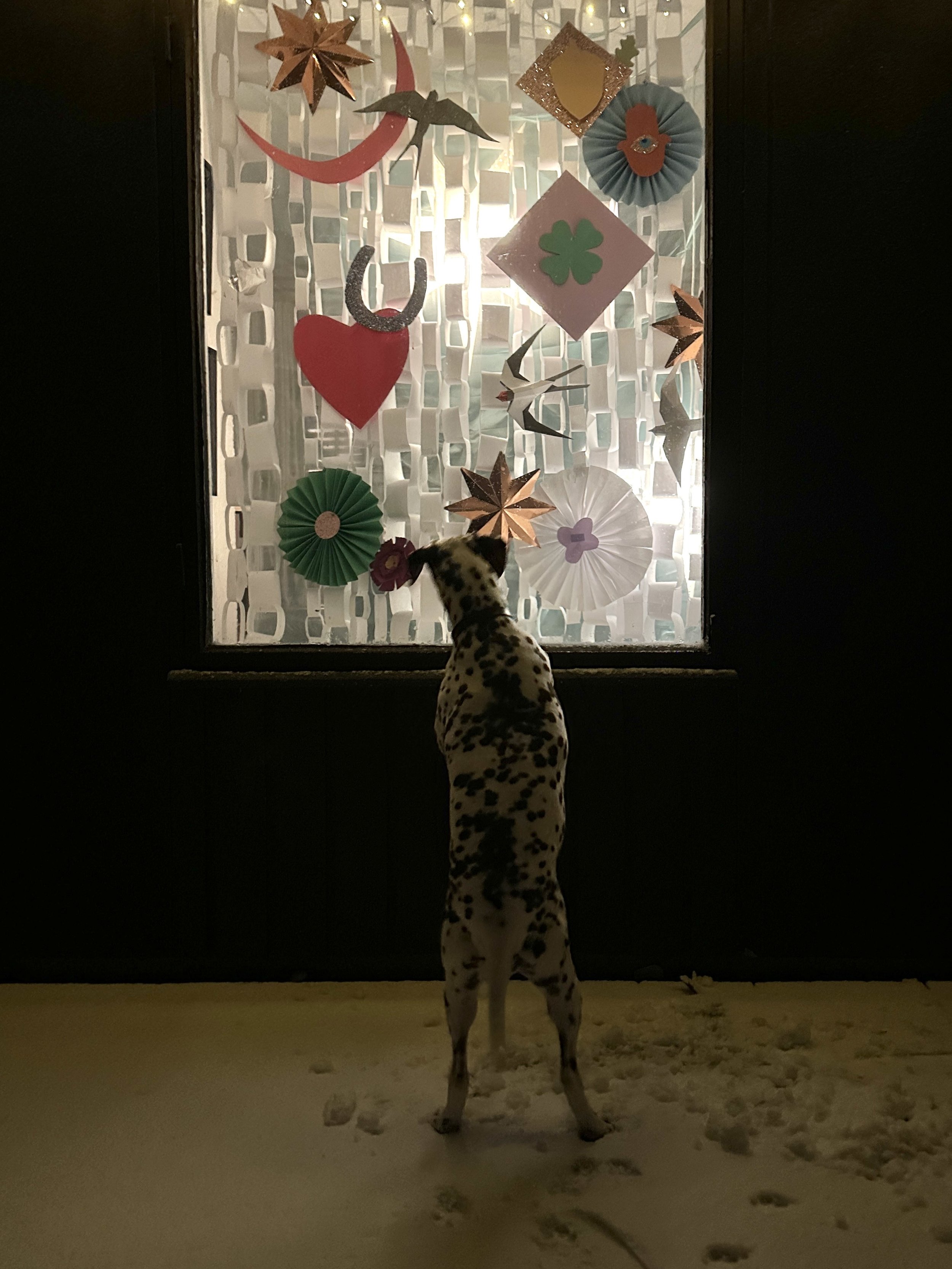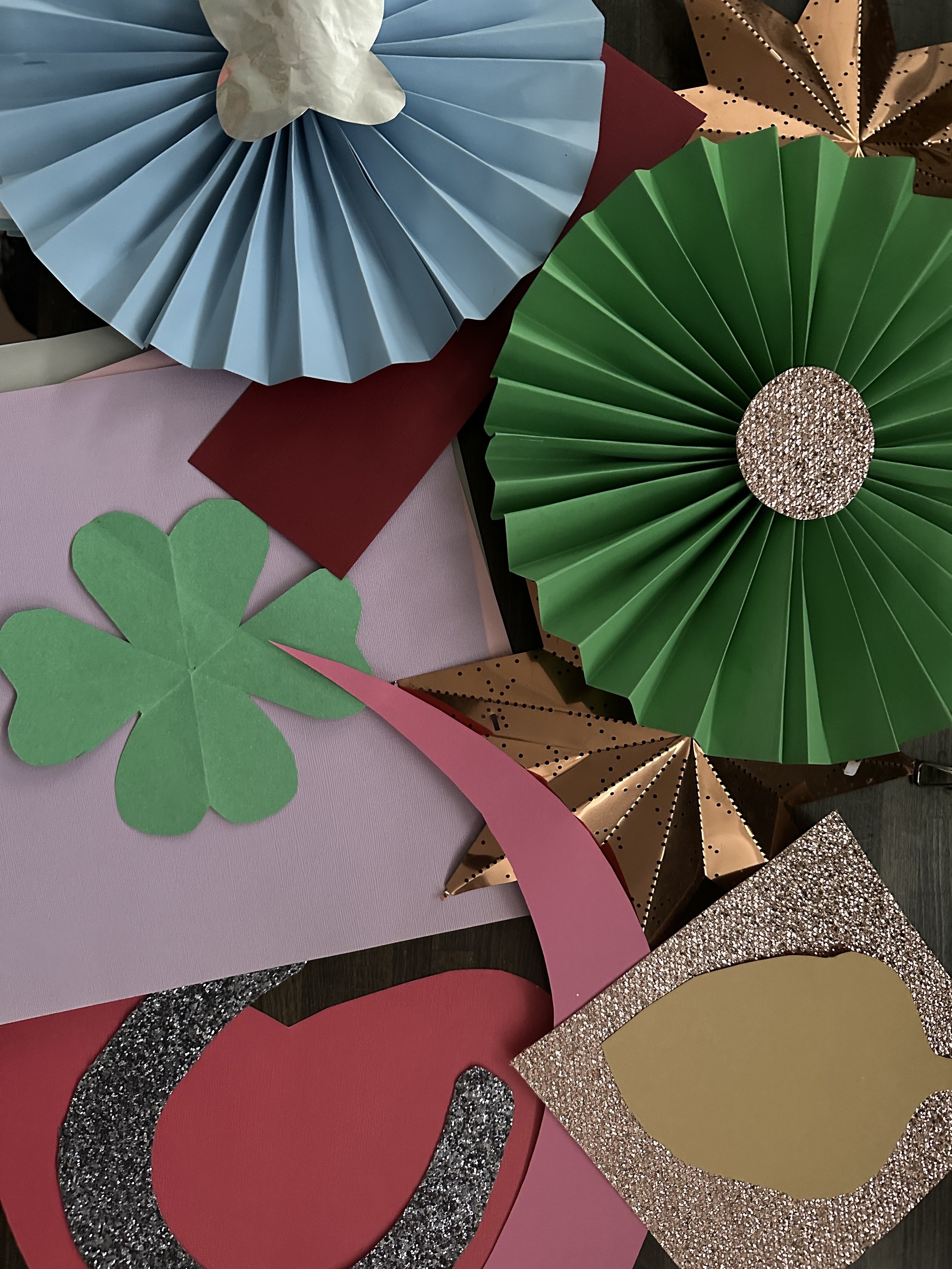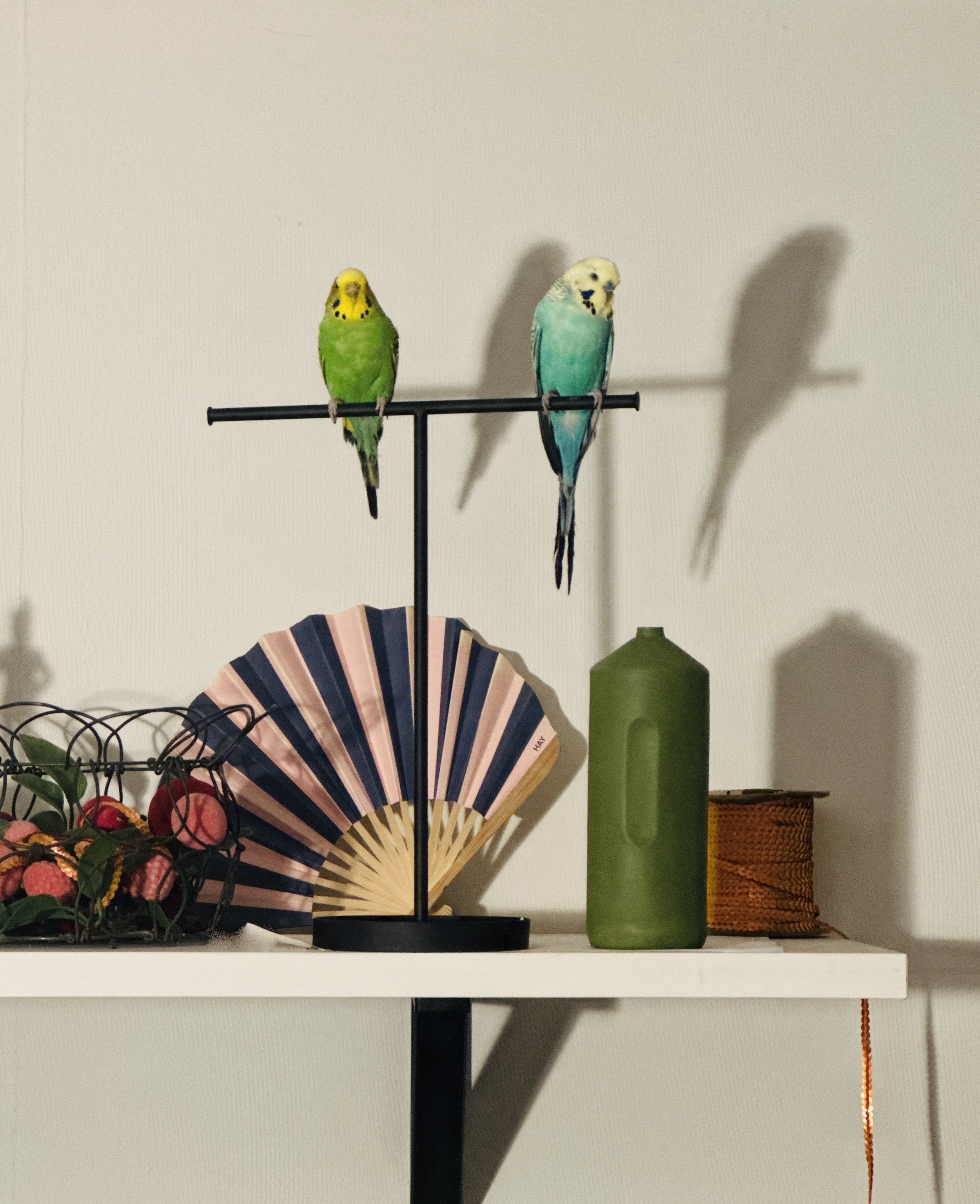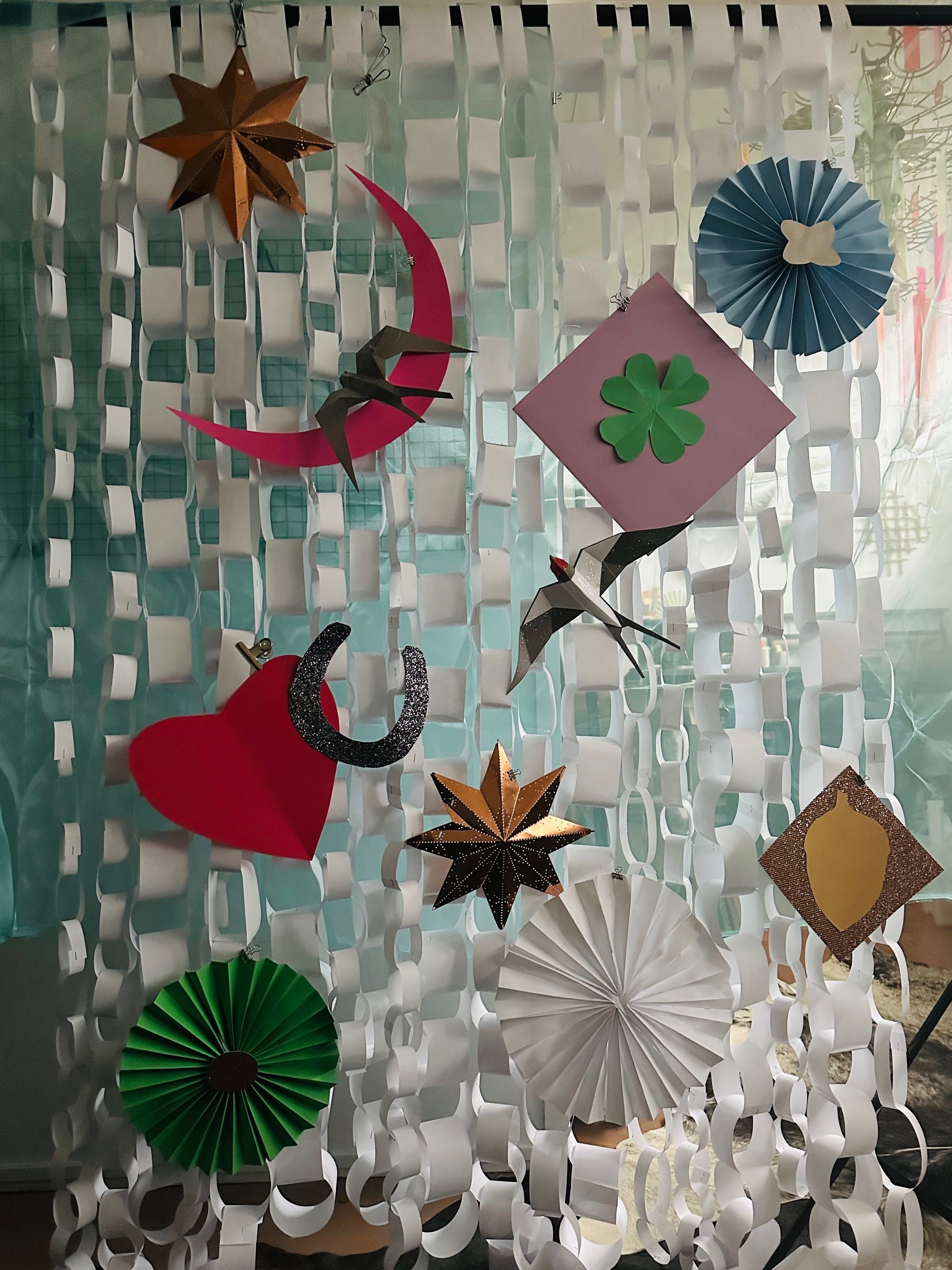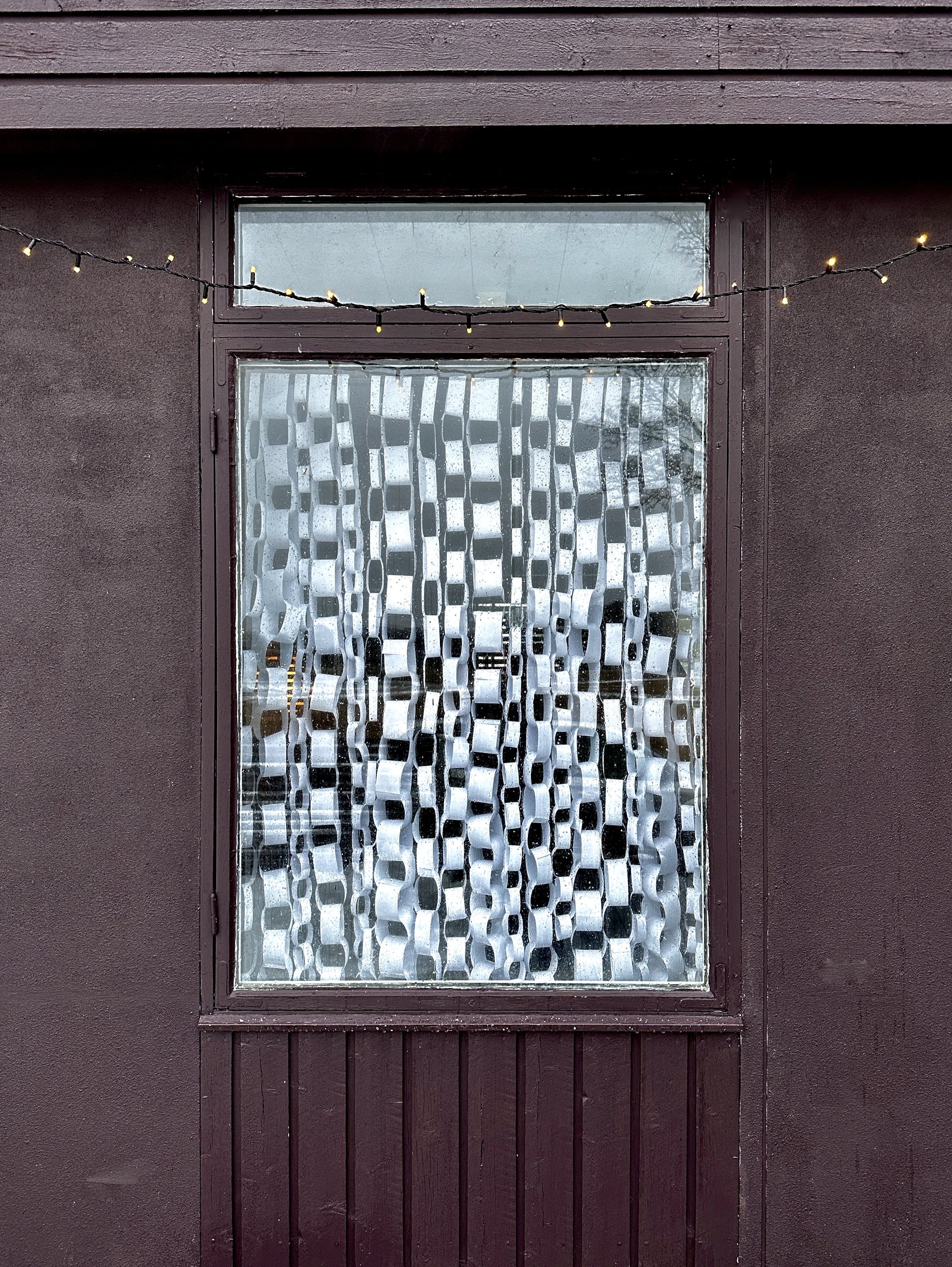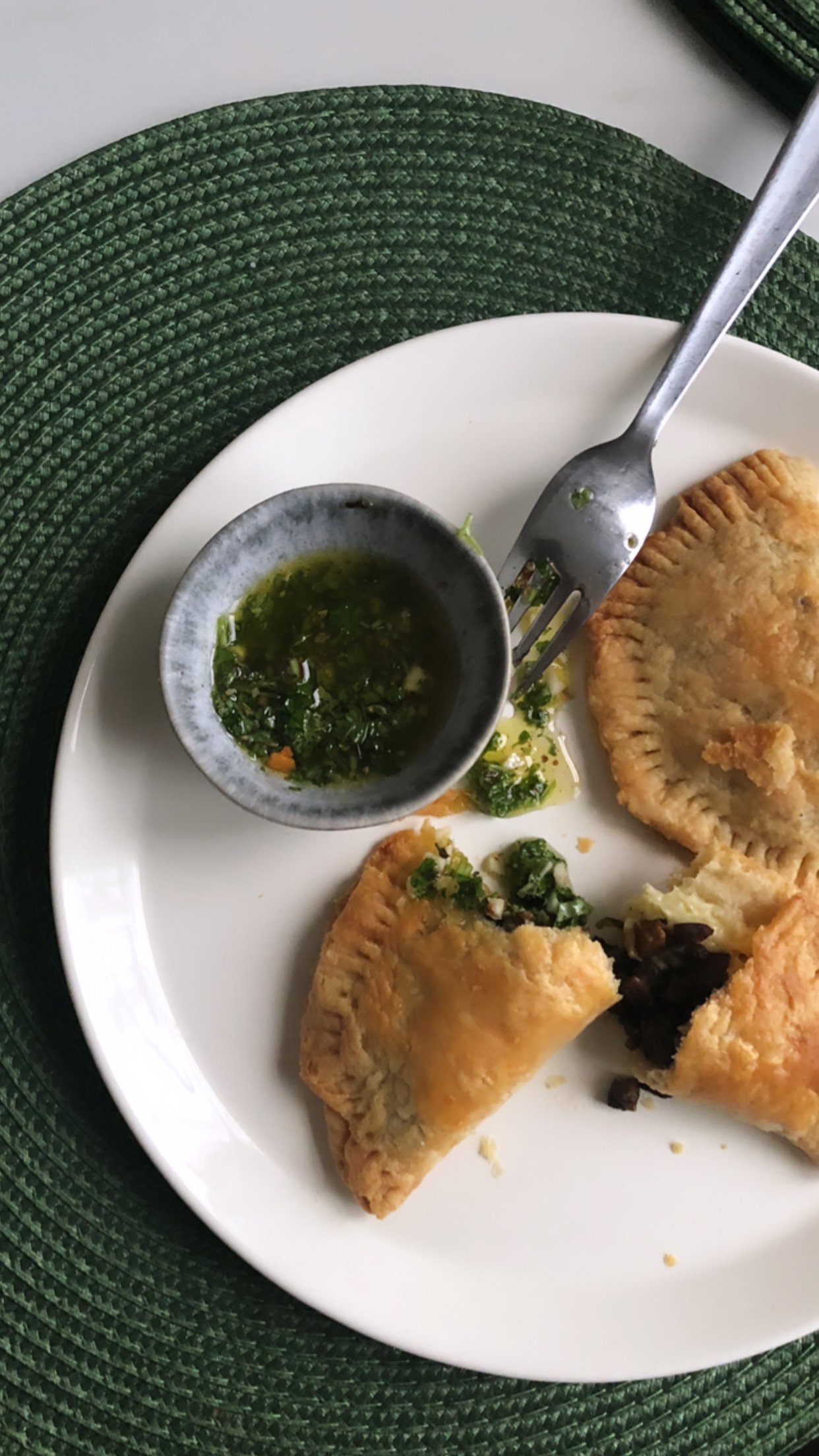jul lycka! a swallow for good luck
Last year Kumlinge started a new tradition to make windows into jul luckor, a living advent calendar on 3 islands. It is lovely to walk and visit holiday scenes on dark days. We chose the 21st which was winter solstice again this year, and also threw on Andrew Birds Christmas album and invited neighbors in for empanadas, Mexican hot chocolate and a seasonal boulevardier.
My inspiration for the window design:
Last year we used the story of a misconception in early science about where swallows go in the winter. The far fetched tale that they somehow make it all the way to the moon to hibernate (read it here). It suited the melancholy of winter omicron waves and perpetuated ideas of false science. This year I wanted it to be brighter and more optimistic so we made a window inspired by the good fortune of swallows. Recovering from post pandemic woes we could use some good luck this winter, so we decided to make a window full of good luck charms that had meaning to us.
I didn’t have a lot of time so I had to find a simple idea with materials on hand and I think it turned out sweet!
Swallows
Swallows have lots of lucky connotations. In many places swallows nesting in the house or barn brought good luck, or protect buildings from fire and lightning. We have swallows all over in the summer.
ACORN and oak leaf
Oak trees can live up to a thousand years old, amazing these stable and strong trees could spring up from a lowly little acorn. This is where the proverb great oaks from little acorns grow comes from to signify that great things can emerge from small and humble beginnings. The oak tree is a sign of survival, the Vikings built their ships from the oak trees. In Norse mythology because tall oaks attracted lightning the tree was thought to be sacred to Thor, the god of lightning. After riding out storms, druids would come and collect acorns, which were always miraculously spared from the god’s wrath. Scandinavians would usually put an acorn on the windowsill whenever a huge storm would blow, as a gesture of respect to Thor, and to ask protection from destructive lightning. Of course, these were in the ancient days when people believed that lightning enters one’s home through the window.
Another Norse legend has it that the god, Odin, picked an oak tree to hang himself from, so he could gain the tree’s aged wisdom. Yggdrasil: the tree of life often depicted as an oak tree at the center of everything. Odin is also the name of one of the ferries that brings you to Kumlinge.
HAND OF HAMSA
The hamsa hand means just about the same thing across diverse cultures and religions. It's a powerful symbol of protection and good, and one of endurance and resilience.
Despite the name the evil eye does no evil towards you, it protects you from those who are wishing you harm or anything negative. Evil eyes of different colors protect different qualities, such as wisdom and confidence. The evil eye goes all the way back to ancient Mesopotamia.
HORSESHOE
Fend off evil spirits by placing a horseshoe above your entrance. Also, when placed upright then the horseshoe will also catch good luck. The horseshoe is well-known for its protective and good luck properties. Just don’t hang it upside down or all the luck will run out.
Heart
These are the Wikipedia posts I love the most. There isn’t really a good luck connotation with the symbol or charm. But love is lucky, the biggest gift and all we should wish for really.
CLOVER
Four-leafed clovers are one of the most heralded good luck symbols. The four sides of the clover represent love, luck, hope, and faith. Four-leaf clovers may seem like they’re filled with luck and it’s true, but with one exception. They’re only luck on the day that you first find it.
NEW MOON
The new moon marks the beginning of a new lunar cycle and often brings with it an array of new beginnings. This leaves new moons feeling like a particularly ideal time for self-reflection and making wishes.
Interestingly enough, most people are unconsciously aligned with this energy, tending to create new habits, start new projects and initiate life changes around the same time as the new moon. That’s cool. What’s even cooler is that consciously embracing the new moon’s fresh energy can allow you to propel those transitions even further.
GREEN
Green conjures day of verdant spring and wealth.
eight point star
The eight-pointed star or Octagrams is believed to have its origins in early astronomy. Eight lines signify the four corners of space (south, north, east and west) and time (two equinoxes and two solstices) and are associated with different meanings in different cultures. In Northern European countries, the star is used for hope, balance and harmony, called the Nordic Rose. Other examples: the ancient Babylonians believed that an eight pointed star represented the goddess Ishtar, associated with the planet Venus. In Judeo-Christian culture, it is an agent for new beginnings. Native American it represents a symbol of hope that is surrounded in a circle. A universal meaning of such stars is that they stand for life, from our birth to death and the wisdom we all possess, no matter how rich or poor we are. Star of Wisdom.
The symbol may be found drawn, painted, carved or woven on many objects people used in the past and use nowadays. For example, it is a traditional pattern for winter clothing in Norway, called a selburose there.
peony
A star in our garden through all of the renovation has been these huge beautiful dark pink peonies.
Peonies and their origins in Greece may be the first known flowers to flower in the world. The Greek island of Naxos, where peonies are known to have been planted by the ancient Greeks over 3,000 years ago, has one of the world’s great peony gardens. By the eighth century, they had made their way from Chinese gardens to Japan, which is clearly a big producer of peony. Peony flowers were traditionally used to cure headaches, asthma, and even birthing discomfort. They were introduced to Europe in the late 1800s and were an immediate success. Peonies are mostly used for decoration these days.
According to legend, the word peony comes from Paeon (or Paean), the gods’ physician in Greek mythology. He was a pupil of Aesculapius, the Greek deity of medicine. According to legend, when Paeon used a peony root to heal Pluto, Aesculapius got resentful and attempted to kill him. Zeus saved him from death by turning him into a peony plant, which many people adored.The Greek myth of Paeonia the nymph has given peonies the reputation of representing shyness. Victorians believed that peonies were cursed by fairies.
The peony is a flower that represents romance, empathy, good luck, wealth, a long marriage, meaning is different in different regions and the most popular is good fortune. This is due to the fact that for a long time, only Chinese rulers wore peonies. They are a sign of bravery, honor, and good fortune in Japan.
EMPANADA RECIPE
Here is my favorite empanada dough and filling, so simple and delicious. We did a savory meat filling, a caramelized onions with thyme and cheese and this kale mushroom, which is my favorite. enjoy!
Make the dough in a food processor
I cut my dough shapes with a bowl
Add filling
Press close, fold or pinch or I use a fork to edge
Egg white wash before you bake them
I bake about 30 minutes but you can see the color
Enjoy with fresh salsa or a chimichurri sauce

